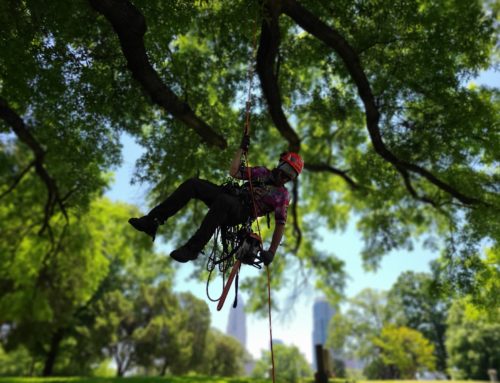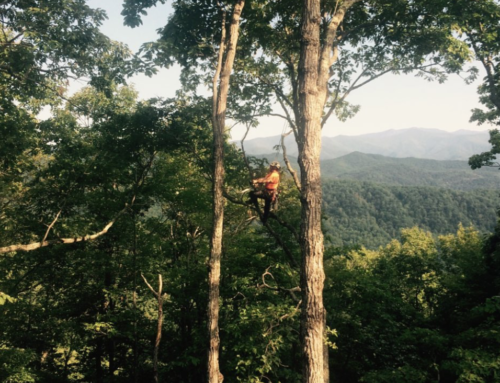Autumn is here, and with it the palette of colors many of us have come to know and love. The Crimson adorning the many Maples around town, the bright yellow seen for miles around atop a mature Tulip Poplar, the fiery Orange on a lucky Black Gum; all serve to remind us that the growing season is waning, and winter will be upon us before we know it. Although I, too, appreciate the visual collage of foliage; I have found that more than ever before, some of these colors are showing up to the party early.
In my work as an arborist, I set eyes on all types of landscapes and plantings in our area. Because I get to observe multiple examples of a given species in varying settings, I can compare the quality of life for a tree in a stressed situation to a healthy and vigorous specimen. For instance, I may have one client whose Tulip Poplar has grown up alongside a light-dappled creek, and another client whose Tulip Poplar is the lone planting in a sunny, grassy front yard atop a slope. When I get to witness the contrast in conditions, I can see with my own two eyes what a given species prefers. This brings me to the prime reason I decided to write this short piece: Maples. The Maples in our area have grown weary of the extreme heat of June, July, and August. The four o’clock heat during this time of year has crept higher in my lifetime, and with it, the rate of evaporation of groundwater. Maples, be they Red, Sugar, Silver, Florida, Chalk, or Boxelder, are all, to some degree, adapted to relatively moist (but usually well-draining) and relatively acidic soils in the Piedmont. These trees proliferate naturally in riparian environments. Where Maples are planted by humans, however, they often want for water and pore space in the soil they call home. Many kinds of trees experience a spurt of root growth in the fall, Maples being one of them. Due to the increased heat, increased evaporation, and long periods without rainfall, Maples in our area are showing their Fall colors early, meaning that photosynthesis within the organism is slowing well before the benefit of this short second period of root growth can be realized. If you have a Maple on your property (with much less emphasis here on Japanese Maples), it is important to understand its irrigation needs. Keeping a layer of hardwood mulch around the base of your tree will also help keep the ground cool and moist; just make sure to keep the mulch a couple inches away from actually touching the trunk, as this can create a risk for rot. If you have a Maple on your property, please consider the aforementioned and evaluate if there is more you can do to keep your Maple in the best health for the future of our shared urban forest.





